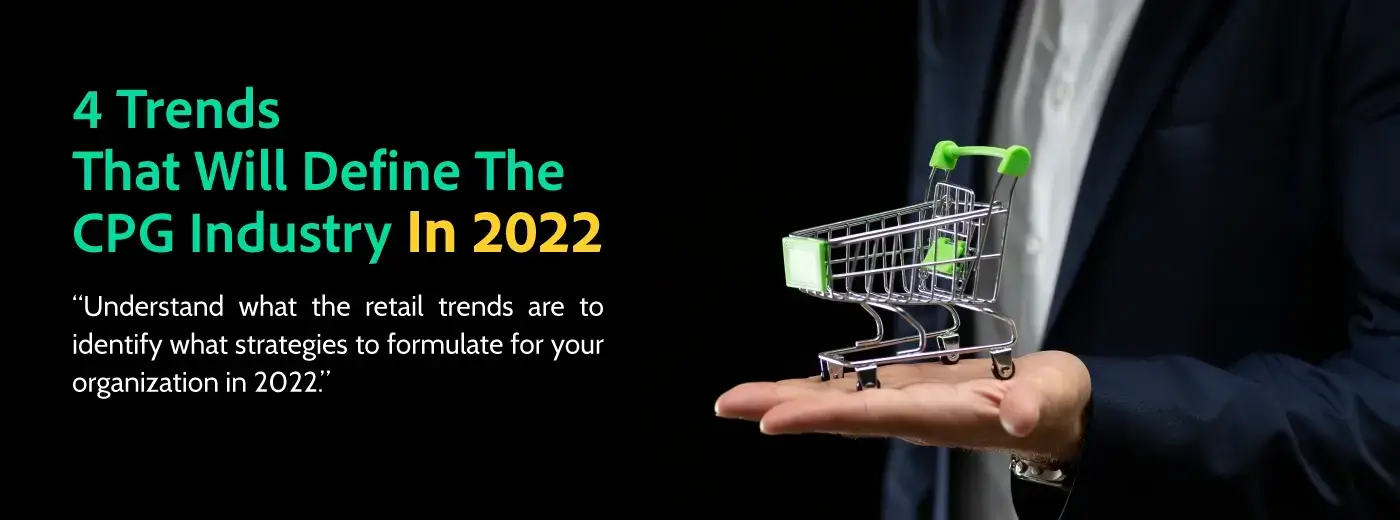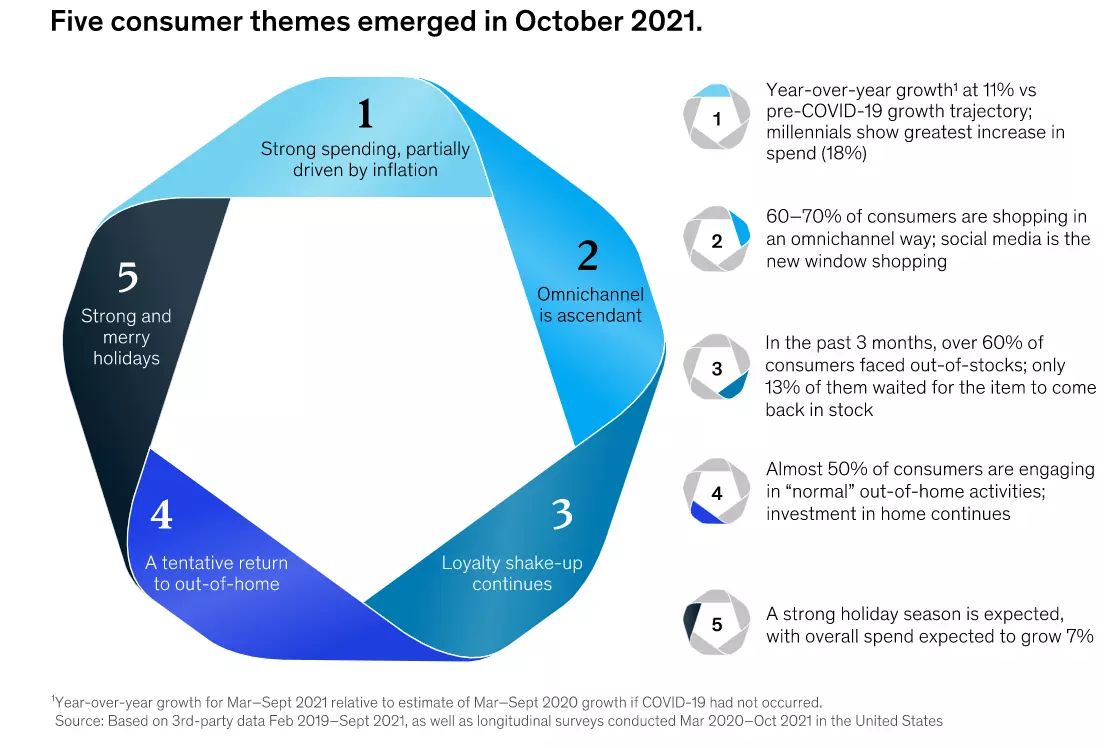
Sign up to receive latest insights & updates in technology, AI & data analytics, data science, & innovations from Polestar Analytics.
The Consumer Packaged Goods (CPG) industry is changing rapidly, especially with the headwinds caused by the pandemic and changing customer behaviour. Covid-19 has especially accelerated some of the forecasted trends like e-commerce growth that would’ve taken roughly 4 to 6 years in a short amount of time.
The sudden change has caused many established industries to re-think their business models to also include digital commercial capabilities to grow along with the growing channels. Let’s take a look at how the changing customer dynamics have affected the companies to think of further aspects of their businesses and the change required.
Sectors like frozen foods and household cleaning have seen an increase in customer demand, mainly due to the attitude of the consumers to keep up their supplies. Whereas, retail stores have seen a large drop in traffic throughout the world either due to government regulations or consumer inhibitions. There was also an increase in canned goods sales.
Another change that we were talking about was the customers buying goods online, for example, coffee subscription sales companies like Mistobox, Trade Coffee, and Yes Plz Coffee which deliver weekly or monthly coffee beans have seen an increase in their sales due to the closure of coffee shops nearby.
You must have observed some of the emerging trends even by reading the content till now like the growing omnichannel presence and the change in consumer behaviour.
Let’s explore what the top 4 emerging trends of CPG trends in 2022 would be in this (hopefully) post-pandemic world.
1. Seamless Omnichannel Experience for customers
In a report by McKinsey, Omnichannel presence has emerged as one of the key trends that are here to stay. Also, social media influence is the heaviest among younger consumers but influences all age groups, most commonly in categories including jewellery, accessories, fitness/sports, and cosmetics. Keep reading to know more about the “influencers” of social media. But it is also how the companies engage with the users over social media and not just their retail store presence.

Source: Mckinsey
This level of engagement and conversations will help the brands establish themselves to have a deeper relationship with the customers. This is mainly because customers crave that “personal” touch in their purchases. Studies showed that 90% of people buy brands that they follow on social media. Therefore establishing a good social media presence can result in better profits.
In the end, it is all about finding the right combination of physical and digital channels including emerging engagement channels and payment gateways like voice assistants and much more. But before the companies start thinking about the strategies, it is important to have a solid plan with a non-siloed data approach and have Connected planning even across channels.
2. Influencer presence
We’ve spoken about how a change in the channel perception i.e. physical and digital is important. But again in Digital, there are multiple ways in addition to the organic growth through various forms of ads or paid marketing. But think about it - there are multiple ways that influencer marketing is proving beneficial to organizations.
Therefore choose your channel and influencer depending on the end goal and the reach you want to achieve.
Also, as influencers tap into the core human interactive needs, trends show when done effectively influencers add authenticity, credibility, trust, reach, and engagement to brand content.
3. Loyalty Shock
If you think your loyal customers would always remain with you, then you might be wrong. As per reports:
Most of these people comprise Generation Z and High earners. Some of the change in loyalties is due to finding other brands that are more conscious of plastics, sugars, use of organic ingredients, etc. Therefore companies need to re-think their Direct to consumer strategies and also think in the long term about sustainability to attract conscious consumers. For this analysis of existing data about customer trends and social media, sentiment is important.
4. Complex Data Touchpoints and Consumer Journey
With Google’s plans to eliminate third-party cookies by 2023, there is now the question of tracking and collecting consumer data with a long-term view. Companies might need better data storage or their own databases to store first-party data from multiple channels.
This also means collecting data all around the clock from multiple channels like PoS, Websites, Social media, and multiple other sources. This will also enable CPG Brands to gain a better understanding of the consumer journey. This will enable brands to have hyper-personalization and a customer-first approach.
Covid-19 has caused many companies to rethink their strategies and increase their pace of operations to keep up with the rapid changes. Therefore, to Sustain Performance optimum channel and brand building with a data-driven marketing approach is necessary. For doing all this having a strong data infrastructure and data analysis with a connected planning approach would lead organizations to a brighter and more profitable future.
About Author

Data & BI Addict
When you theorize before data - Insensibly one begins to twist facts to suit theories, instead of theories to suit facts.